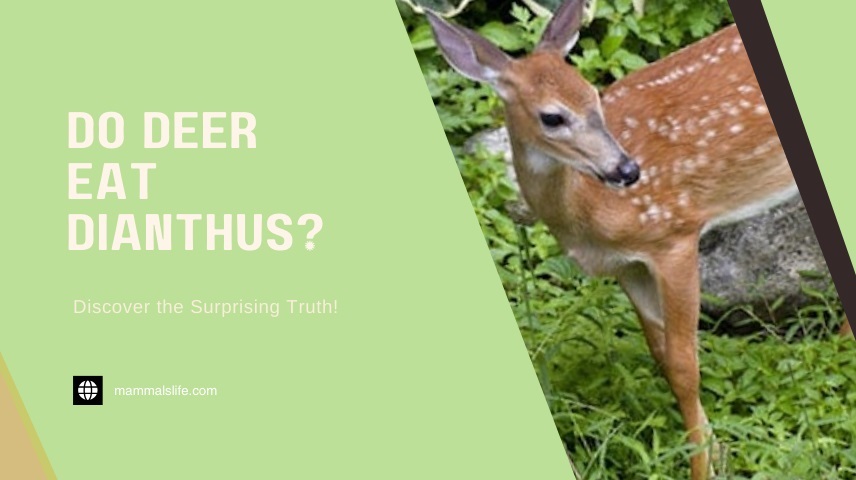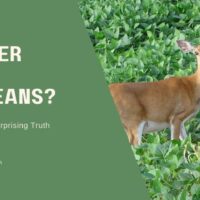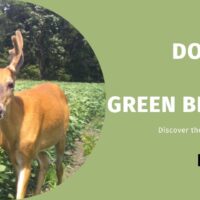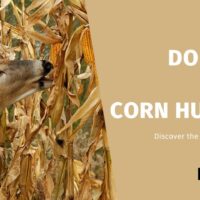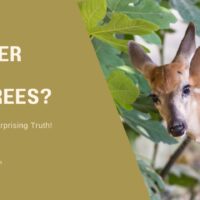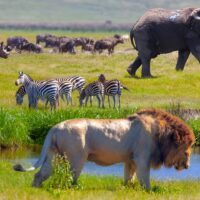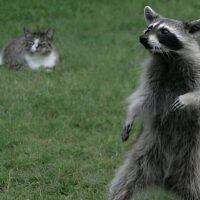Deer do not typically eat straw. They prefer fresh vegetation like leaves, grass, and fruits.
Deer are herbivores that thrive on a diet rich in fresh vegetation. Their primary food sources include leaves, grasses, fruits, and twigs. In the wild, deer forage for the most nutritious and palatable plants available. Straw, being dry and low in nutrients, is not an ideal food source for them.
While they might occasionally nibble on straw if other food is scarce, it doesn’t provide the necessary nutrients for their health. Understanding the dietary preferences of deer can help in creating suitable habitats and managing their populations effectively. Knowing what deer eat is crucial for both wildlife enthusiasts and those involved in land management.
Deer Diet Basics
Deer have varied diets, depending on what they find in nature. Their diet changes with the seasons. Understanding their food habits helps us know their behavior.
Natural Food Sources
Deer eat many plants, leaves, and grasses found in forests. They prefer tender, green plants. Some common foods include:
- Grasses
- Leaves
- Fruits
- Bark
- Twigs
Deer also eat nuts and acorns from trees. They chew on bark during winter. Deer do not usually eat straw. Straw lacks the nutrients they need.
Seasonal Variations
Deer’s food choices change with the seasons. In spring and summer, they find fresh plants. They eat young grasses, leaves, and fruits. During fall, acorns and nuts become important. Deer need more energy for winter. In winter, finding food gets harder. Deer eat more twigs, bark, and evergreen plants.
Here is a simple table showing their seasonal diet:
| Season | Food |
|---|---|
| Spring | Young grasses, leaves, fruits |
| Summer | Grasses, leaves, berries |
| Fall | Acorns, nuts, fallen fruits |
| Winter | Bark, twigs, evergreen plants |
Deer adapt their diet based on what they find. They always search for the best food available.
Role Of Straw In Deer Diet
Deer are herbivores and eat many types of plants. Their diet mainly consists of leaves, twigs, and grasses. But do deer eat straw? Let’s explore the role of straw in a deer’s diet.
Nutritional Value
Straw is the dry stalks of cereal plants after the grain has been removed. It has low nutritional value. Deer need foods rich in vitamins, minerals, and protein. Straw lacks these essential nutrients.
| Nutrient | Present in Straw | Importance for Deer |
|---|---|---|
| Vitamins | No | Essential for overall health |
| Minerals | No | Necessary for bone health |
| Protein | No | Important for muscle growth |
Straw is mostly fiber. Deer need more than just fiber in their diet. They seek out food with higher nutritional content.
Instances Of Consumption
Deer may eat straw in certain situations. This usually happens when other food sources are scarce. Winter months can be tough for deer. Snow covers their usual food sources. In these times, deer might nibble on straw. They do this out of necessity, not preference.
Some farmers use straw in deer feeding areas. They mix it with hay or other feed. This helps to bulk up the feed but is not a primary food source. Deer will eat the hay and other nutritious parts first.
In summary, straw is not a preferred food for deer. It lacks the nutrients they need. Deer might eat it if they have no other choice. They need a balanced diet for good health.
Comparing Straw With Other Foods
Deer are often seen munching on various types of food. But do deer eat straw? Let’s compare straw with other foods that deer commonly eat.
Grass And Hay
Deer love to eat grass. It is soft and easy to chew. Grass provides essential nutrients and keeps deer healthy. It grows in fields and meadows, making it easy to find.
Hay is dried grass. Farmers store hay for animals to eat in winter. Deer like hay because it smells good and is nutritious. Straw, on the other hand, is less nutritious. It is hard and dry, making it less appealing to deer.
| Food | Nutritional Value | Texture |
|---|---|---|
| Grass | High | Soft |
| Hay | Medium | Dry |
| Straw | Low | Hard |
Fruits And Vegetables
Deer enjoy eating fruits. Apples, berries, and pears are deer favorites. Fruits are sweet and juicy, providing energy and hydration.
Vegetables like carrots and leafy greens are also enjoyed. These foods are rich in vitamins and minerals. Straw lacks the taste and nutrition of fruits and vegetables. Deer prefer the fresh taste of these foods over the dry, bland straw.
- Fruits: Apples, berries, pears
- Vegetables: Carrots, leafy greens
Factors Influencing Deer Diet
Understanding what deer eat helps us know their behavior and survival. Various factors influence a deer’s diet. These factors include their habitat, the region they live in, and the availability of food.
Habitat And Region
Deer live in different habitats and regions. Each habitat offers unique food sources. Deer in forests eat leaves, twigs, and acorns. Deer in grasslands eat grasses and shrubs. Mountains provide deer with lichens and mosses. Desert deer eat cacti and dry plants.
Different regions offer different seasons. In winter, food is scarce. Deer might eat bark and twigs. In summer, they enjoy fresh greens and fruits. Regional differences affect a deer’s diet significantly.
Availability Of Food
Food availability plays a big role in what deer eat. In areas with plenty of food, deer can be picky. They eat the best and most nutritious plants.
In areas with limited food, deer eat whatever they find. This includes straw, which is not their first choice. They eat it when other foods are scarce.
Natural disasters, like droughts, affect food availability. Deer might eat unusual foods during these times. This includes straw or other low-nutrient items.
| Habitat | Common Food Sources |
|---|---|
| Forest | Leaves, twigs, acorns |
| Grassland | Grasses, shrubs |
| Mountain | Lichens, mosses |
| Desert | Cacti, dry plants |
Deer diets vary based on habitat, region, and food availability. Understanding these factors helps us learn more about deer and their survival strategies.
Implications For Deer Health
Understanding the impact of straw on deer health is essential for wildlife enthusiasts and deer caretakers. Straw is often used as bedding, but its consumption by deer can lead to various health implications.
Digestive System
Deer have a complex digestive system designed to process fibrous plants and vegetation. Straw, although fibrous, lacks the necessary nutrients deer need. Consuming straw can lead to digestive blockages. Deer might struggle to digest it properly.
| Food Type | Nutritional Value | Impact on Digestion |
|---|---|---|
| Straw | Low | Potential Blockages |
| Leaves | High | Easy to Digest |
| Grass | Moderate | Easy to Digest |
Proper digestion is crucial for deer to absorb nutrients. Without the right nutrients, deer may suffer from malnutrition. This can weaken their immune system and overall health.
Overall Well-being
Straw lacks the vitamins and minerals deer need. This can affect their overall well-being. Deer relying on straw might experience energy loss. They may become more prone to diseases.
- Energy Loss
- Increased Disease Risk
- Poor Coat Condition
Straw consumption can also affect the deer’s coat. A poor diet leads to a dull, unhealthy coat. This makes it harder for deer to stay warm in cold weather.
Ensuring deer have access to a proper diet is vital. Quality forage and vegetation support their health. Avoid offering straw as a primary food source.
Frequently Asked Questions
Do Deer Eat Straw?
Deer typically do not eat straw. They prefer fresh vegetation.
Is Straw Nutritious For Deer?
Straw lacks nutritional value for deer. They need nutrient-rich food.
Can Straw Be Used As Deer Bedding?
Yes, straw can serve as comfortable bedding for deer.
What Do Deer Prefer To Eat?
Deer prefer fresh leaves, twigs, fruits, and nuts.
Do Deer Eat Hay Instead Of Straw?
Yes, deer will eat hay. It is more nutritious than straw.
How To Keep Deer From Eating Garden Plants?
Use deer repellents, fencing, or plant deer-resistant vegetation.
Conclusion
Deer generally prefer fresh greens over straw. They might nibble on straw if other food is scarce. Understanding deer diet helps manage their habitat better. Keep straw as a last resort for feeding deer. Always prioritize their natural dietary needs to ensure their health and well-being.


